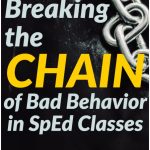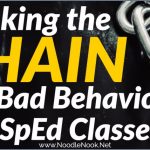The idea of a behavior chain is the reason you’re able to easily complete complicated tasks. It’s not because you’re a genius (although if you’re here, then your obvi one smart cookie). It’s because you’ve internalized the behavior over time by mastering the smaller steps. Then you linked those smaller steps together, like a chain, so there’s automaticity in the behavior. With this in mind, read on for more on breaking the chain of bad behavior in sped classes.
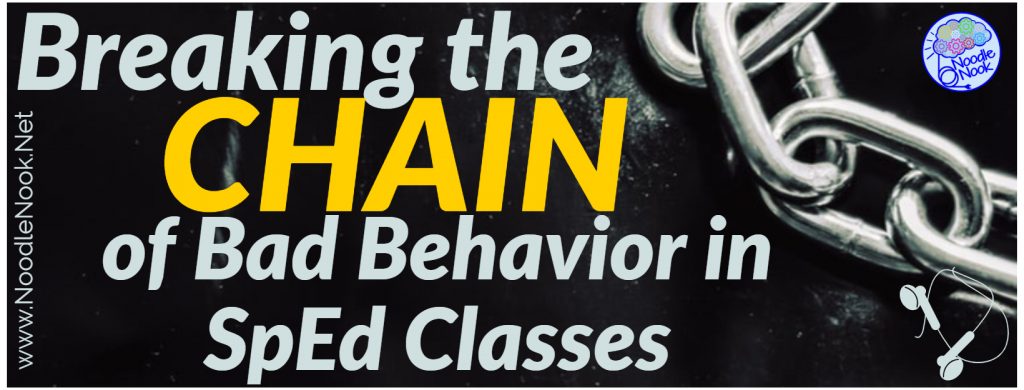
I feel so much empathy for teachers who work in classrooms with students who are aggressive or violent. Lately it seems like most of my classroom questions are from teachers in classrooms who are dealing with significant behaviors. So, what can you do about breaking the chain of bad behavior to stop aggression in a self-contained SpEd classroom or Autism Unit?
4 Strategies to Change Behavior
Lots of times when a teacher is at the point of reaching out to me, they are at the edge.
They’ve spent all their patience.
They have stressed themselves out.
They are battling a sense of failure or defeat.
First off, I want you to know I have been there. I have been beaten, abused, bruised, and defeated. I know exactly what that feels like. But, just like all other challenges in the classroom, there are a few things to try that can help.
Below are 4 strategies you should think about when it comes to dealing with behaviors in your classroom.
#1 Communication System
The grunting, hitting, spitting, and more are all forms of communication. Take a moment to ask yourself what you’ve given your students as a way for them to communicate. Do you have a VOD or Core Board for them to use that is locked up somewhere? Maybe it’s been ripped or broken and isn’t available. Do you have another way for your student to express wants and needs?
Really take a moment to think about the way in which your student can communicate with you. Then think about the ways in which they are choosing to communicate with you (like the hitting and the spitting). We have to change that communication system.
Remember, all behavior is communication. Are you listening?
– Ayo at Noodle Nook
Remember, all behavior is communication. Ask yourself “Am I listening?” That may seem generic, but are you reacting to the behaviors instead of responding to the things your student is trying to communicate… and there is a difference.
How do you want your student to get your attention? How can they share wants and needs? Consider low-tech options such as visual icons, core boards (like the one from Noodle Nook), or even words on post-its. You can also opt for higher-tech options like the Proloquo and other communication apps on a cell phone or tablet. You may also consider a dedicated communication device for the student with a mid-tech device, like a Go-Talk.
No matter what you pick, one thing will stay the same. The only way to make a change is if YOU and YOUR STAFF are consistent with it. You have to show the student that their communication system has power (the power to get things, stop things, or go places). And then you have to use that system consistently. Oftentimes, this one change can have the biggest impact on breaking the chain of bad behavior.
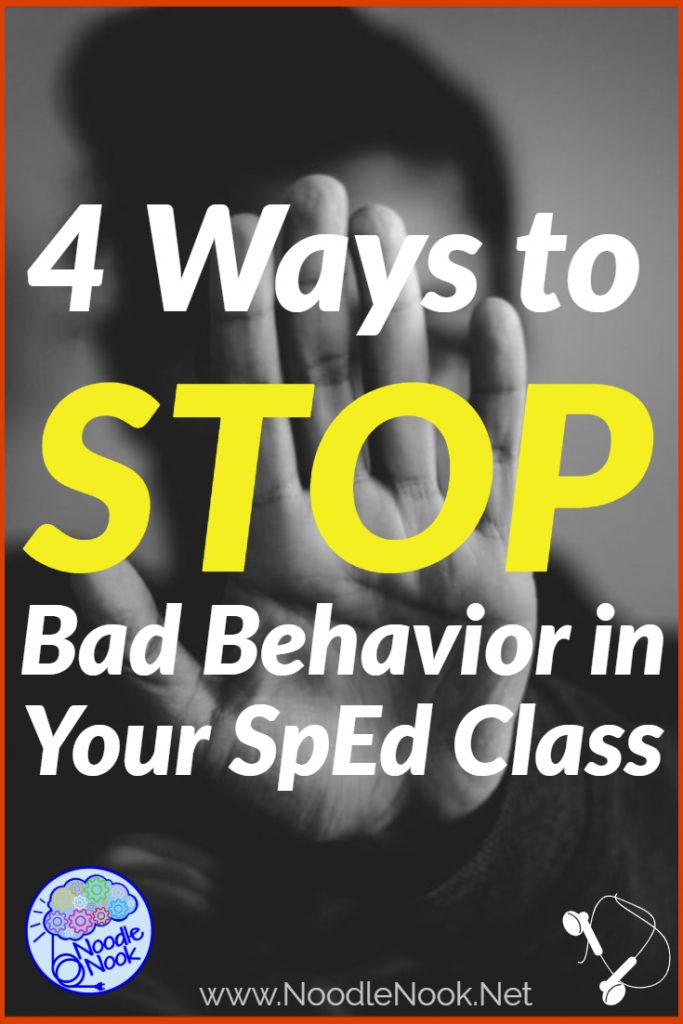
#2 Social Inclusion
What? I know… scary. Social inclusion is sometimes necessary. If a student is reaching out for attention, you may want to consider social interactions which will do three things. One, it allows for peer modeling. Two, it allows for the student to get positive attention from peers. Three, it offers a chance for students to mimic positive behavior. These three things help a student in breaking the chain of bad behavior.
If you cringe at the thought, try using a social narrative or social story to work on demonstrating socially appropriate behavior. Cover the story when your student is in a calm and receptive state so you can role-play and practice what to do. You may be able to reap some of the benefits of social inclusion without leaving your room.
If you are interested in social stories for your classroom, check these out.
#3 Planned Ignore
If you are having behavior issues within your classroom because your student is seeking attention, you will want to learn how to do some planned ignore. Planned ignore does not mean you ignore everything your student is doing in hopes that it goes away. It means you skip giving attention to negative behavior while offering tons of praise for positive behavior. This is all in hopes that your student will see that with good behavior, they can get the attention they seek.
If you want to read more about dealing with Attention-Seeking Behavior, click here.
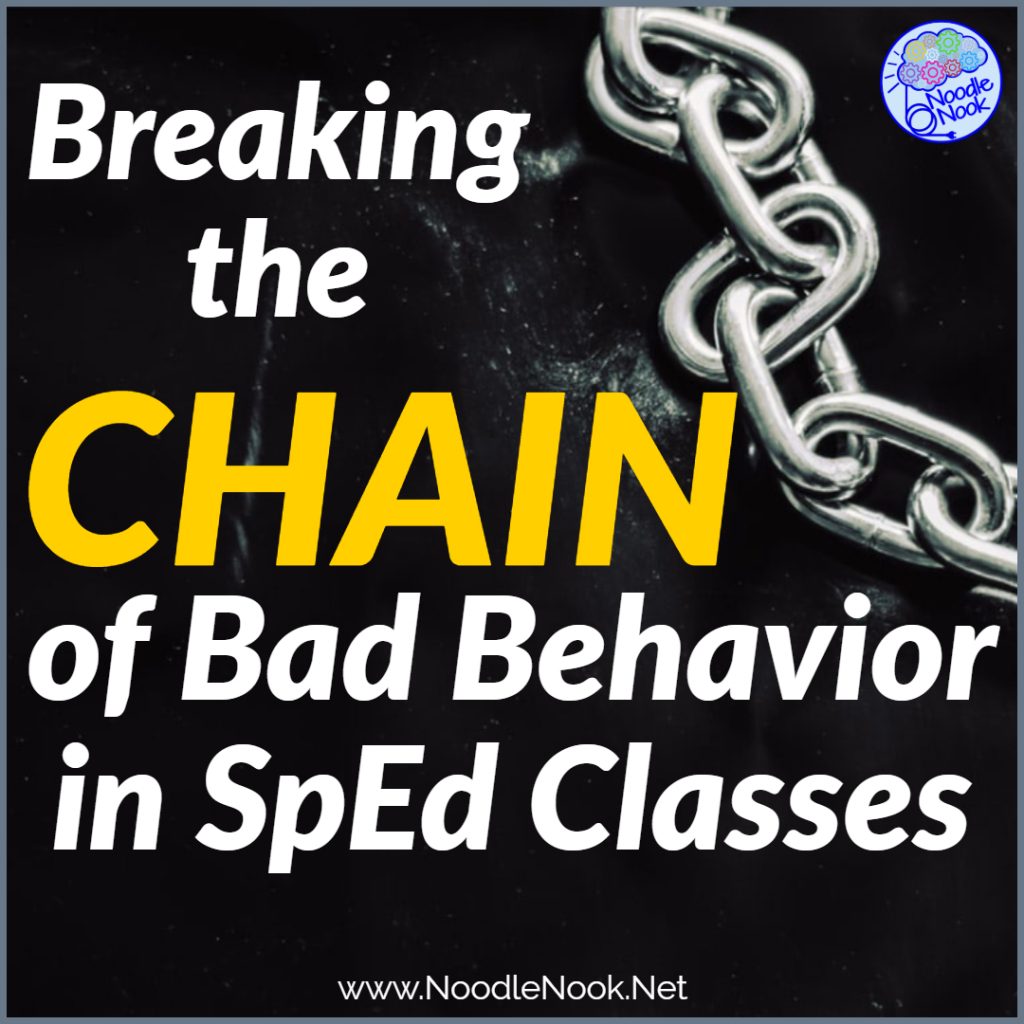
#4 Break the Chain of Behavior
Sometimes behavior is like driving on a highway. Once a student enters the on-ramp, you have to ride it out until the next exit. That means when a student does a series of precursor behaviors and you do not intervene to stop them from getting on the highway, then you are going to have problems. Stop them before they get on the highway by redirecting them.
Redirection can look like doing a state change. That can be by changing seats or positions within the room.
You can try a body change and that can be by going for a walk, doing jumping jacks, or yoga.
The break may need to be a mental break, like listening to music or doing a preferred compliance task.
Finally, the redirection needed to break the chain of behavior may need to be taught to the student directly. You may need a calming sequence a student can initiate in multiple environments. A calm-down sequence can include breathing, counting, or journaling. (Read more about how to set up a calm down corner in your classroom here.) These strategies are how we change the path and start breaking the chain of behavior to end aggression or violence.
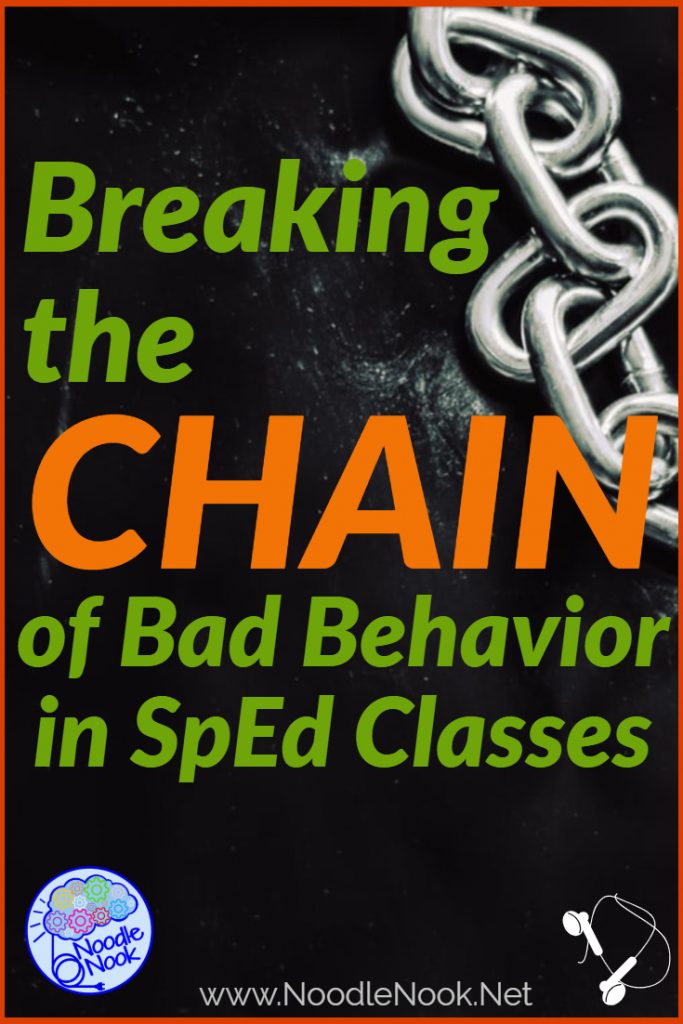
Final Word
No matter what, you have to do something. Feeling like you are walking into a danger zone every day when you go to work is no fun. And your student likely needs some intervention so they can have better opportunities as they grow up.
You can improve the situation by breaking the chain of behavior, implementing a communication system, using social modeling or social stories, and by shifting your focus from the negative to the positive using planned ignore.
Just don’t lose hope. Try these strategies and then email me to let me know how it’s going.
Stay strong, mighty teacher, and teach on!
HEY! Get social with us! Follow us on Pinterest, Instagram, Facebook, Twitter, YouTube or iTunes!

